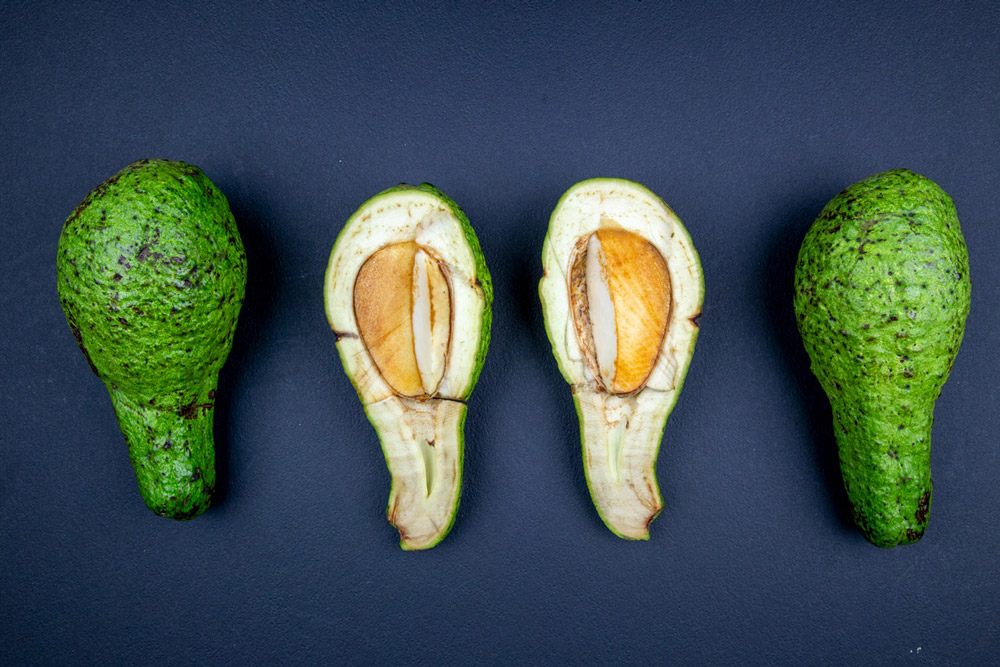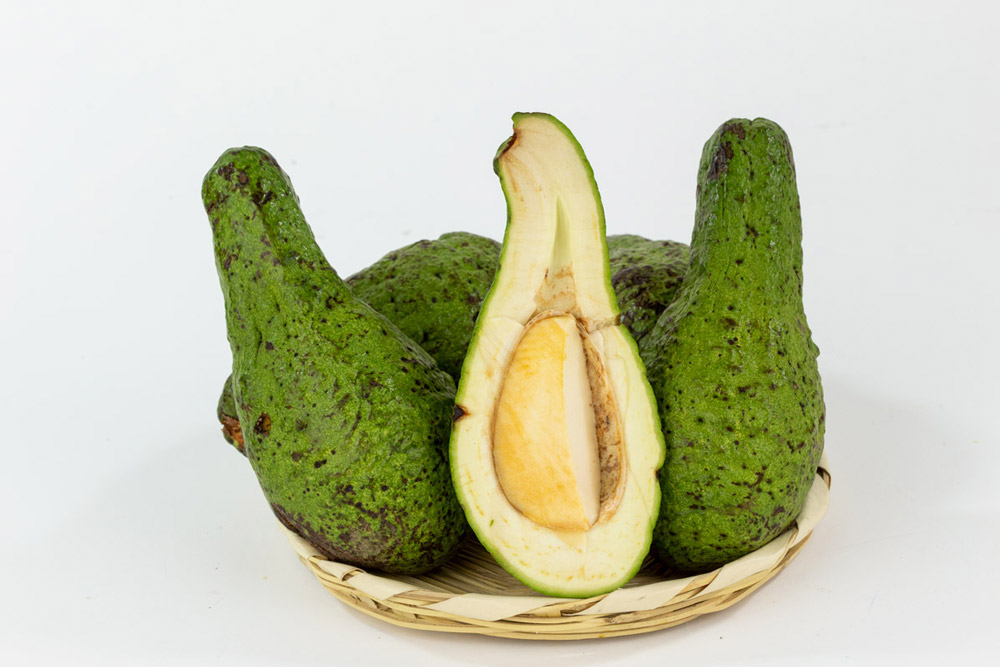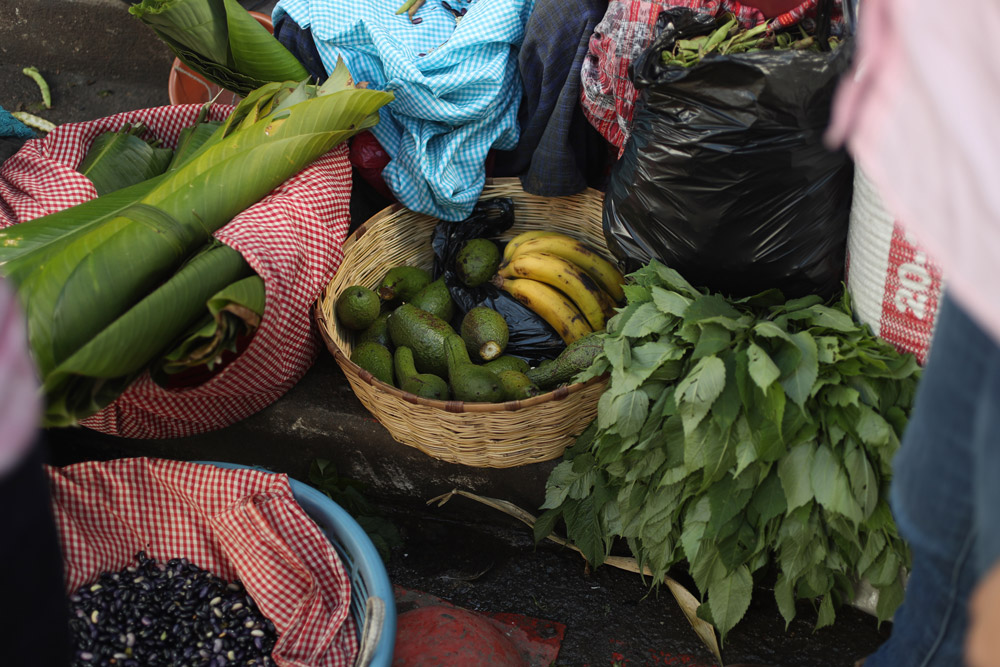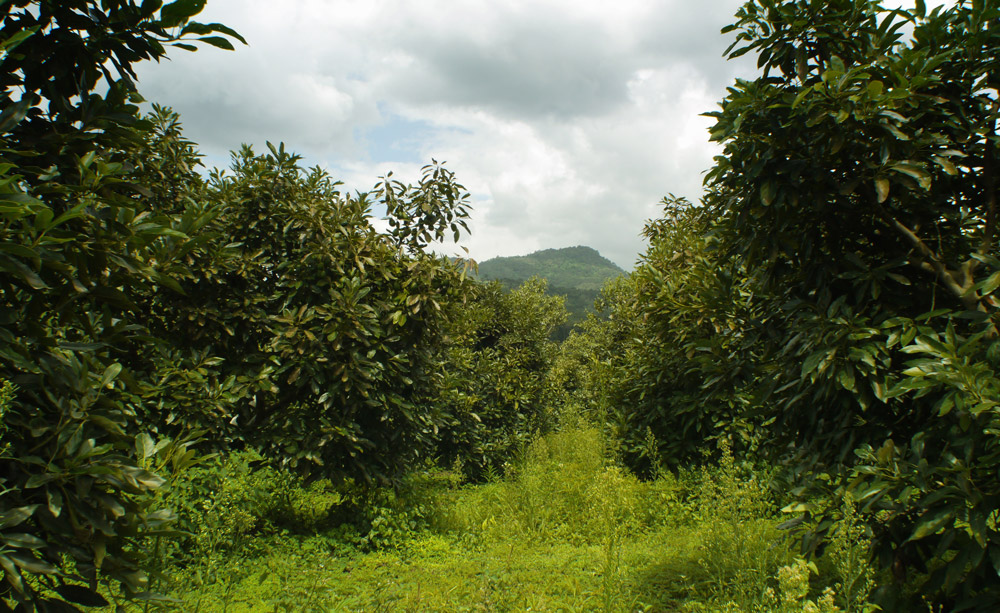Opened avocados (Persea schiedeana) with their seeds exposed. FLAAR Studio, Guatemala City. July, 2015. Photograph by Sofía Monzón.
The avocado tree (in the genus Persea) belongs to the Lauraceae family and it is the bearer of one of the most popular fruits in the world: the “avocado”. Its journey to gain such popularity began, whatsoever, long ago, since it has held significant importance for Mesoamerican civilizations since the pre-Columbian era up to date.
Moreover, its impact in the modern world ranges through cultural, economic, nutritional, and culinary perspectives. For instance, its cultivation and consumption have posed a rich historical background not only in Mesoamerica, but also globally right now. With that in mind, the main goal of this article will be to undertake the exploration of such an amazing plant, and showcase how it gained such cultural value in the Pre-Columbian era.
The origin of the “Gem Fruit”: where did the avocado come from?
Group of avocados(Persea spp.) arranged in a Guatemalan traditional basket. Guatemala, Guatemala. July, 2015. Photograph by Sofía Monzón.
It is believed that the avocado (or at least a primitive ancestor of it), along with other members of the Lauraceae family, originated in the Early Cretaceous period, around 94-144 million years ago in the western part of the supercontinent Gondwana (at that time, the Earth and its continents were arranged differently). Furthermore, it is thought that later on, the avocado was dispersed by large primitive mammals that existed in that time, which could consume giant seeds (like those of the avocado and its ancestors), spreading the avocado to the area we now know as Mesoamerica. It was at this point that the origins of the avocado that many of us recall started to develop.
The avocado is native to Mesoamerica, more specifically, to the highlands of central and eastern Mexico and the highlands of Guatemala. In that sense, it is known that the avocado was domesticated in this region, along with other crops such as corn, beans, sweet potatoes, agave, and cassava. This process was developed primarily by Pre-Columbian civilizations, where the avocado fruit was highly valued for its particular characteristics. For instance, the Maya and Aztec groups valued its flavor, texture, and nutritional properties, not to mention the symbolic properties they later conferred it.
FUN FACT: The Aztecs called the avocado "ahuacatl," which some archaeologists suggest could also mean "testicles." In this context, it is known that this fruit was considered important in Pre-Columbian beliefs associated with fertility.
“A sacred fruit”: cultural and spiritual symbolism in Mesoamerican civilizations
Wild variety of avocado (Persea spp.). Las Pilas, Rabinal, Guatemala. August, 2016. Photograph by Alexander Gudiel.
As happened with other plants of Mesoamerica, the avocado was given great cultural value, and to some extent, religious importance because the native cultures considered the fruit to be a gift from the gods. In addition, avocados were also eaten and used in religious practices to invoke higher produce yields, and as a symbol of fertility and rebirth.
Regarding the arts, avocados made their way into numerous depictions, such as mural paintings and ceramics, where they may have represented not only real meals and scenes, but also religious beliefs. For instance, it is likely that the avocado was included in the rites of ceremonial meals of the Mayan people, and in the diet of the elite, which was a sign associated with prosperity and health. Besides, the fruit and other parts of the tree served as remedies for health problems including diarrhea, stomachaches, rheumatism, intestinal worms, toothaches, skin rashes, and menstrual cramps.
Another interesting belief in the Mayan culture was that avocado trees bore the spirits of their ancestors, which among the uses and beliefs previously described, added to the importance of this plant. Hence, it is notorious that this plant held deep spiritual connotations beyond mere utility. The trees were regarded as physical links with the past.
“A real star”: delicious, versatile, and packed with nutritional benefits
Wild avocado (Persea schiedeana) at Tactic market in Alta Verapaz, Guatemala; August 15, 2018. Photograph by Alexander Gudiel.
In Maya culture, avocado was consumed daily. Besides being one of the main foods along with beans, chilies, corn, yuca, and many others, the avocado also remained, up to the present, one of the most valued and consumed foods in Mesoamerica, which has happened to extend to the rest of the world. And this is not a surprise, since it contains many nutritional components, such as healthy unsaturated fats, vitamins, minerals, and fiber.
Some of its specific components include monounsaturated fatty acids; vitamins A, E, and C; potassium; folic acid, and a high concentration of fiber. And this doesn’t stop here. Thanks to its high caloric content, avocados are also a great source of energy.
In addition to being highly nutritious, avocados’ texture and flavor allow them to be used in multiple culinary recipes, ranging from savory dishes to desserts, or even as an ingredient for infusions and beverages.
Lastly, the use of avocados has surpassed culinary purposes. Due to their composition, they have been incorporated into various products such as vitamins, medicaments, creams, perfumes, shampoos, soaps, and other supplements.
FUN FACT: There are several varieties of avocado that are recognized by their differences in size, flavor, weight, texture, and appearance. Each of these vary in how they can be consumed and in their medicinal properties. Some varieties are "Hass," "Lamb Hass," "Reed," and "Zutano."
"Revolutionary”: how the avocado has changed the economy
Avocado farm in “Parramos”, Chimaltenango, Guatemala; 2011. Photograph by the FLAAR Mesoamérica Team (FLAAR Mesoamerica Photo Archive).
The avocado has had a significant global impact, with its fruit being one of the most consumed and most valuable agricultural products on the global market right now. Within that context, there is a strong demand for it in North America, Europe, Asia, and Oceania, where Mexico is known to be the leading producer and exporter of avocados. Moreover, this dynamic has not only encouraged its cultivation, but also has had a significant impact in the labor market, due to the labor it requires through each growing and commercialization stage.
References
- 2001
- HISTORIA Y GENÉTICA DEL AGUACATE.
Available online:
http://209.143.153.251/Journals/CICTAMEX/CICTAMEX_1998-2001/CICTAMEX_1998-2001_PG_100-121.pdf
- 2024
- Variedades de aguacate.
Available online:
www.viverosbrokaw.com/productos/aguacate/variedades-de-aguacate/
- 2021
- Socio-environmental impacts of the avocado boom in the Meseta Purépecha, Michoacán, Mexico. Sustainability, 13(13), 7247.
- 2016
- Avocado: characteristics, health benefits and uses. Ciência rural, 46(4), 747-754.
- 2019
- Avocado oil: Characteristics, properties, and applications. Molecules, 24(11), 2172.
- 2024
- El aguacate ayuda a tu salud y a prevenir padecimientos.
Available online:
www.gob.mx/salud/articulos/conoce-los-beneficios
-del-aguacate#:~:text=Sab%C3%ADas%20que%20es%20un%20fruto%20que%20se%
20cultiva%20todo%20el%20a%C3%B1o.&text=Contiene%20alrededor%20de%2015
%20nutrientes,Sodio%2C%20as%C3%AD%20como%20grasa%20monoinsaturada.
- 2017
- Economic impact of the avocado (cv. Hass) wilt disease complex in Antioquia, Colombia, crops under different technological management levels. Crop protection, 101, 103-115.
- 2013
- The avocado: botany, production and uses. CABI.
- 2024
- Los mejores alimentos del mundo maya.
Available online:
www.nationalgeographic.es/viajes/los-mejores-alimentos-del-mundo-maya
- 2021
- Avocado production: Water footprint and socio‐economic implications. EuroChoices, 20(2), 48-53.
- 2021
- El simbolismo del aguacate como planta cultural a través de los tiempos y en diversos entornos culturales: desde la Mesoamérica precolombina hasta la República Checa contemporánea. (Tesis de pregrado).
Available online:
https://is.muni.cz/th/akikb/Uhrova_BP-.pdf
Posted August 30, 2024
Written by: biologist Mariana Rivas Gálvez


















































































